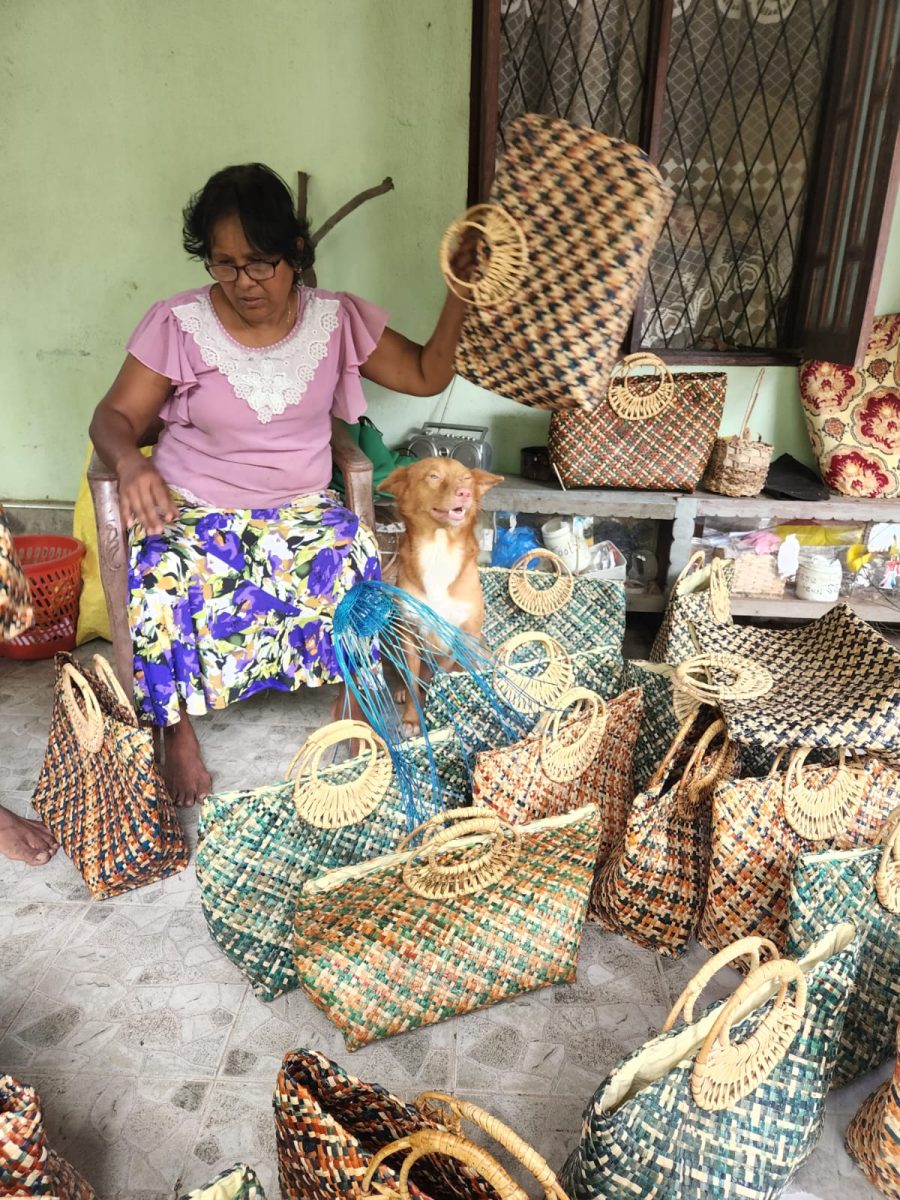The instinctive urge to draw from nature and honor its products by wearing them decoratively on our bodies –in the form of jewelry– while using practical but beautifully crafted bags to transport our goods unfolds through the creativity that our craftsmen show with their talent.
A natural product, commonly known as „pan leaves“ or „reed leaves“, is a strong, durable, and 100% environmentally friendly material found in nature. These pan or reed plants grow near shallow watercourses or on moist soils, and their unique hollow stem allows for many uses.
Since these leaves are in large quantities and wild in areas like Bentota, Induruwa, Batticaloa And Trincomalee growing, its use often helps keep paths clear for villagers. So no waste is created by weeding – on the contrary: it is used to create a livelihood for the local people.
Pan art originated in woven mats used as sleeping pads or to decorate floors and roofs in households. It was a ritual process in which women and young girls came together, sat in groups, talked, laughed, bonded, and learned the trade while producing.
Very similar to the Western quilt tradition, where generations unite to preserve traditions. Weaving the mats is locally known as Paduru (mat) Rataa (method).
Over time, the local women discovered that many other objects could also be made using the reed weaving technique – such as. B. Handbags, placemats, wallets, hats, rice baskets, pot coasters, lampshades And Storage bags.
This is how small homework developed into whole things Cottage Industries – Small businesses that still serve as a source of livelihood for many households today.
Other creative craft industries emerged, including the Batik design on natural products – a process known for the artistic wax-reserve technique used in dyeing, adopted by villages as a small-scale industry.
Another handicraft is this Processing of coconut shells.. to get out of it Kitchen utensils, bowls and classic jewelry how Earrings, bracelets and necklaces to produce – known for its soothing warmth and natural connection to the earth, which provides the wearer with positive energy.
The understanding of ancient batik art – the technique of applying color and design through cooking and wax-resistant patterns – is a legacy that has been passed down through generations. The workshops are often located directly in your own garden or in parts of your home.
Sun and rain play a central role here: the color absorption depends on the drying process – and sunlight is crucial here.
This is a unique feature of small-scale industry, while larger operations employ machinery to produce a more robust but less authentic product.
The Design of a single piece of fabric is detailed, unique and artistic – mostly made outdoors, outdoors wood-fired cooking areas Cooked and on open lines dried as groups of women gather around the process to transform many meters of fabric into ornate materials.

In addition to supporting the traditional craft industries of its current partners –such as pan, reed and batik work–, Nivartana is always looking for talented artisans to promote and develop their businesses.
During our research, we discovered that different regions produce similar products, but with a unique design, their own style, special quality – and, above all, with lived tradition. The stories about how craftsmanship was passed down through generations and how much was lost in the tsunami, the pandemic or the economic crisis are deeply touching. But with a smile they respond to our interest in their work – and show enthusiasm and hope to revive the lost knowledge for themselves and others.
We believe in the power of ideas, in the skill of hands, in the determination of hearts, and in the joy of being seen and appreciated. Our goal is to offer environmentally friendly, traditional products that share Sri Lankan heritage, culture – and above all joy – with others. Holding a Nivartana product in your hands means supporting many levels of people and arousing compassion in those who buy it.
Join us on our journey to empower women and their families – through your support and purchase.
Meet the queens behind our sustainable fashion...
„We are proud to be a part of Sri Lanka that also finds its place in the Western world.“
„Our methods are our hands and our hearts.“
„We teach a craft to our daughters and create a home for our sons through this craft.“
„We can send a piece of ourselves into the world with love.“